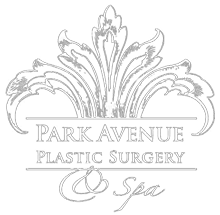Types of Breast Implants
Published on July 8, 2009 by Brian JosephUntil recently, saline implants were the only options for women who wanted to enlarge or reconstruct their breasts. In the early 1990s the Food and Drug Administration (FDA) banned silicone implants because of the potential risks associated with undetected ruptures and other health problem concerns.
But now, thanks to the FDA’s November 2006 approval, women again have the option to choose silicone. After extensive research, the FDA determined that silicone implants are safe and effective.
At Park Avenue Plastic Surgery in the Orlando area, we are proud to offer both silicone and saline implants to our patients. Dr. Brian Joseph will gladly discuss the advantages and disadvantages of silicone and saline implants, giving patients all of the information necessary to make an informed decision.
Silicone Implants
Silicone-filled implants have a very natural look and feel. However, implant ruptures are difficult to detect because the breast will not immediately deflate. The body can begin to form scar tissue around the silicone material, causing further pain or discomfort.
Saline Implants
Implants filled with sterile saline (much like saltwater) can also be very aesthetically pleasing. A saline implant rupture is quickly evident, as the saline is absorbed back into the body and the breast deflates. One complication, rippling, is often more common with saline.
Breast augmentation can alter the way a woman feels about herself. Dr. Joseph is committed to expertly performing this procedure to help women achieve the bodies they desire. For a free breast enlargement consultation, please contact our office today.
Archives
- February 2024
- October 2023
- April 2020
- March 2020
- November 2019
- October 2019
- May 2019
- April 2019
- March 2019
- February 2019
- January 2019
- December 2018
- November 2018
- October 2018
- September 2018
- August 2018
- July 2018
- June 2018
- May 2018
- April 2018
- March 2018
- February 2018
- January 2018
- December 2017
- November 2017
- October 2017
- September 2017
- August 2017
- July 2017
- June 2017
- May 2017
- April 2017
- March 2017
- February 2017
- January 2017
- December 2016
- November 2016
- October 2016
- February 2016
- September 2015
- July 2015
- November 2014
- September 2013
- August 2013
- June 2012
- May 2012
- April 2012
- March 2012
- February 2012
- January 2012
- November 2011
- September 2011
- August 2011
- July 2011
- June 2011
- May 2011
- April 2011
- February 2011
- December 2010
- October 2010
- September 2010
- August 2010
- July 2010
- June 2010
- May 2010
- April 2010
- March 2010
- February 2010
- January 2010
- December 2009
- November 2009
- October 2009
- September 2009
- August 2009
- July 2009
- May 2009
- March 2009
- February 2009
- January 2009
- December 2008
- November 2008
